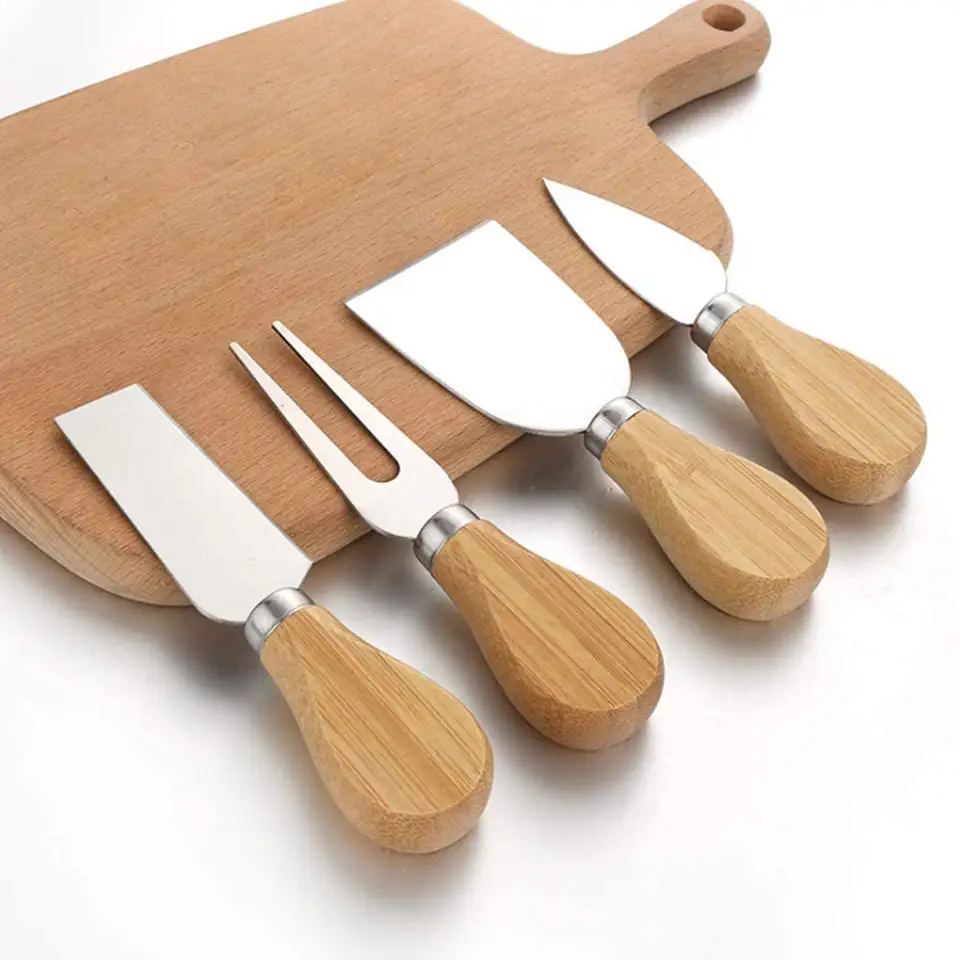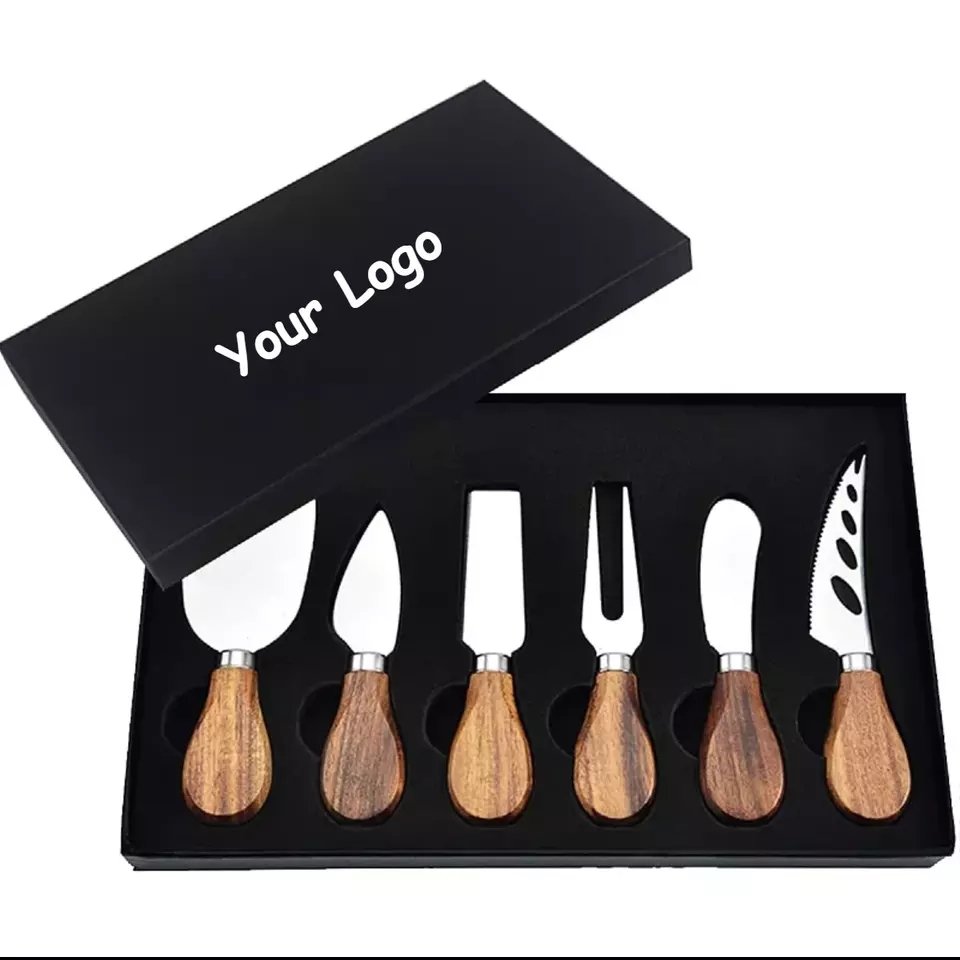Choosing the right flatware is crucial for any restaurant. It impacts both dining experience and operational efficiency.
Restaurant flatware choices influence the guest experience and operational costs. Finding the right supplier ensures high-quality, durable cutlery.
Dive deeper into restaurant flatware to learn how to make the best choices for your business.
Table of Contents
What kind of flatware do restaurants use?
Restaurants choose flatware based on style, material, and durability. It’s more than just cutlery; it’s an essential part of the dining experience.
The flatware in restaurants varies by style, material, and intended use, balancing elegance and practicality.
Flatware in restaurants is divided into casual and fine dining sets. Casual dining usually uses stainless steel with a simple design, while fine dining establishments often opt for more refined options. The design and material should align with the restaurant’s theme and cuisine. For casual dining, flatware should be durable, comfortable for regular use, and easy to maintain. Fine dining, on the other hand, demands precision in design and a refined aesthetic.
What materials are commonly used?
The most common materials are:
| Material | Characteristics | Best for |
|---|---|---|
| Stainless Steel | Durable, affordable, easy to clean | Casual and mid-range dining |
| Silver | Elegant, requires more care | Fine dining |
| Gold-Plated | Luxurious, delicate | Luxury restaurants |
The choice of material also affects the weight, finish, and overall appearance of the flatware. Stainless steel is a practical choice, especially for restaurants needing large quantities at affordable prices. Silver and gold-plated options, while more expensive, are typically reserved for special occasions or fine dining.

Where do restaurants buy their cutlery?
Restaurants purchase cutlery from suppliers who offer quality, reliability, and competitive prices, ensuring a consistent dining experience.
Many restaurants choose suppliers that offer bulk deals on durable, high-quality cutlery suited to their needs.
Restaurants typically buy flatware from established suppliers who specialize in bulk orders. These suppliers often offer a range of designs, materials, and customization options to meet the unique needs of each restaurant. When selecting a supplier, restaurants consider factors like production time, quality control, and product availability. Many large suppliers also offer discounts for bulk orders, which helps restaurants save on operational costs.
Some of the most trusted sources include:
| Supplier Type | Examples | Advantages |
|---|---|---|
| Wholesale | Amazon, Alibaba | Low prices, wide selection |
| Specialized Suppliers | Brilliant (cutlery experts) | Customization, high-quality, reliable supply |
| Local Vendors | Regional suppliers | Fast delivery, personalized service |
Restaurants often build long-term relationships with suppliers to ensure consistent quality and avoid production delays.
How often do restaurants get new silverware?
The frequency of replacing silverware varies depending on restaurant type, budget, and customer volume.
Regular maintenance and replacement are necessary for maintaining a high standard in restaurant cutlery.
Most restaurants replace silverware based on wear and tear. In high-volume environments, replacement happens more frequently to maintain the appearance and quality of the flatware. Casual restaurants may replace silverware once every 1-2 years, while fine dining restaurants often replace theirs less frequently due to the higher cost and careful maintenance. Regular inspection is vital to ensure the silverware doesn’t have visible damage or signs of wear.
Factors influencing replacement frequency:
| Factor | Impact on Replacement Cycle |
|---|---|
| Material | Stainless steel lasts longer than silver |
| Restaurant Type | High-traffic restaurants replace more often |
| Maintenance | Proper care extends the lifespan |
In addition to replacing old pieces, restaurants should also consider refreshing their stock to update their dining aesthetic or meet customer preferences.
What's the difference between flatware and silverware?
Though often used interchangeably, flatware and silverware are not quite the same.
Flatware refers to the tools used for eating, while silverware specifically refers to cutlery made of silver or silver-plated materials.
Flatware includes knives, forks, spoons, and serving utensils used for eating. Silverware, on the other hand, specifically refers to cutlery made from silver or silver-plated materials. In modern usage, many restaurants refer to their flatware as silverware regardless of the material. This term can cause confusion when it comes to quality and price. Silver is more expensive and requires more maintenance than stainless steel, but it adds an elegant touch to fine dining settings.
Why the confusion?
The line between flatware and silverware has blurred as materials like stainless steel are often referred to as silverware due to their shiny finish and look. However, the essential difference remains: flatware is a broader term, while silverware is material-specific.
What stainless steel is used in restaurants?
Stainless steel is the most common material used in restaurant flatware due to its durability, low maintenance, and resistance to corrosion.
Different grades of stainless steel offer varying levels of quality and resistance, impacting restaurant cutlery longevity.
The most commonly used stainless steel grades in restaurant flatware are 18/0, 18/8, and 18/10. The numbers refer to the percentage of chromium and nickel in the steel, which determine its resistance to rust and corrosion.
Common Stainless Steel Grades:
| Grade | Chromium Content | Nickel Content | Common Use |
|---|---|---|---|
| 18/0 | 18% | 0% | Budget restaurants |
| 18/8 | 18% | 8% | Mid-range restaurants |
| 18/10 | 18% | 10% | Fine dining |
18/10 is the highest quality stainless steel, commonly used in fine dining settings due to its strength, corrosion resistance, and shine. Restaurants with high volume may use 18/0 or 18/8, as these are more affordable yet still durable for everyday use.

What kind of flatware is very durable and used in casual and fine dining establishments?
Durability is key for flatware used in both casual and fine dining establishments, but different restaurants prioritize it differently.
Durable flatware can come in stainless steel, silver, or other materials, depending on the restaurant’s needs.
Stainless steel flatware is often the top choice for both casual and fine dining because it offers a balance between durability, aesthetics, and cost. In casual dining, restaurants often use stainless steel that’s budget-friendly but still functional for daily use. In contrast, fine dining restaurants might select more refined stainless steel grades or even silver-plated flatware for a higher-end appearance.
Durability in flatware is determined by:
| Factor | Impact on Durability |
|---|---|
| Material | Stainless steel is the most durable option |
| Design | Simple, thicker designs tend to last longer |
| Maintenance | Proper cleaning and care extend the lifespan |
Casual dining establishments look for stainless steel flatware that is resistant to rust, tarnish, and breakage. Fine dining establishments may look for flatware that maintains its shine and elegance after repeated use.
Choosing the right flatware supplier is essential for restaurant success. Make sure to prioritize quality and durability.
How much flatware for a restaurant?
Determining how much flatware your restaurant needs can be a challenging task. It’s essential to consider both usage and storage space.
Typically, restaurants should have at least 2 to 3 sets of flatware for every seat. This ensures you can accommodate customers while waiting for a new batch of flatware to be cleaned.
When planning how much flatware to buy, you should factor in your restaurant’s seating capacity, the type of meals served, and the turnover rate. It’s essential to have enough flatware to handle peak hours, as running out can negatively impact service quality.
For example, a fast-casual restaurant may not need as much flatware on hand as a fine-dining establishment, where each seating might require multiple utensils. On average, you’ll want to have about 2 to 3 sets of flatware per seat. This allows for quick turnover during busy times and ensures you have enough flatware available for new guests.
Here’s a simple guide to help you calculate your flatware needs:
| Factor | Recommendation |
|---|---|
| Seating Capacity | 2-3 sets per seat |
| Meal Type | Adjust depending on the complexity of the meal |
| Traffic/Turnover | High traffic = more flatware |
Investing in additional flatware may seem like an upfront cost, but it pays off in the long run by ensuring smooth operations during busy times.
Why the confusion?
The line between flatware and silverware has blurred as materials like stainless steel are often referred to as silverware due to their shiny finish and look. However, the essential difference remains: flatware is a broader term, while silverware is material-specific.
Key Factors Affecting Replacement
| Factor | Impact on Lifespan |
|---|---|
| Material Quality | Stainless steel utensils last longer than cheaper alternatives. However, even high-quality stainless steel will need to be replaced eventually. |
| Frequency of Use | High-volume restaurants with constant utensil use will likely need to replace their serving pieces more frequently than lower-traffic establishments. |
| Maintenance | Proper care, such as washing utensils promptly after use and avoiding harsh detergents, can extend the life of serving utensils. Additionally, avoiding harsh scrubbing and soaking helps keep their integrity intact. |
| Type of Utensil | Expected Lifespan | Factors Affecting Durability | Replacement Timing |
|---|---|---|---|
| Stainless Steel | 3-5 years | Usage frequency, care | Every few years depending on condition |
| Plastic Serving Utensils | 1-2 years | Usage, improper care | More frequently due to wear and tear |
Serving utensils made from higher-quality stainless steel or other durable materials can often last 3-5 years with proper care.
Why the confusion?
The line between flatware and silverware has blurred as materials like stainless steel are often referred to as silverware due to their shiny finish and look. However, the essential difference remains: flatware is a broader term, while silverware is material-specific.
How can you tell if flatware is sterling or plated?
Identifying whether your flatware is sterling or plated can be tricky. It’s important to know, as sterling silver is more valuable and durable than its plated counterparts.
Sterling silver flatware contains 92.5% pure silver, while plated flatware is coated with a thin layer of silver. The difference lies in the weight, price, and durability.
If you want to know whether your flatware is sterling or plated, look for specific hallmarks or perform tests. Here’s how to distinguish them:
Hallmarks and Tests
| Test Method | Description |
|---|---|
| Hallmarks | Sterling silver flatware will often have a hallmark indicating its purity, such as “.925” or “sterling”. This is a clear sign that the flatware is made of 92.5% pure silver. |
| Magnet Test | Sterling silver is not magnetic, so if a magnet is attracted to the flatware, it’s likely plated or made of a different metal. |
| Tarnish Test | Sterling silver tarnishes over time, whereas plated flatware may not tarnish as visibly. However, this method can be unreliable because the plating may wear off. |
Durability and Cost Comparison
| Type of Flatware | Composition | Durability | Price Range | Ideal Use |
|---|---|---|---|---|
| Sterling Silver | 92.5% Silver, 7.5% Alloy | High | Expensive | Fine dining, collector’s items |
| Silver-Plated | Thin layer of silver | Low to medium | Affordable | Casual dining, everyday use |
Sterling silver flatware is a premium choice, while plated flatware offers a more cost-effective alternative for restaurants that want a silver-like appearance without the high cost.
What number is the best flatware?
Selecting the best number for flatware isn’t just about the style, but also about its strength and ability to withstand heavy usage.
The number associated with flatware, like 18/8 or 18/10, indicates the steel’s composition. The higher the number, the more durable and resistant to corrosion the flatware will be.
The “number” typically refers to the grade of stainless steel used in flatware. It’s essential to understand the numbers to pick the right one for your restaurant’s needs.
Understanding Stainless Steel Numbers
Flatware grades like 18/8 and 18/10 are important because they tell you how the flatware will behave over time. Here’s a closer look:
| Material Grade | Features | Ideal Use |
|---|---|---|
| 18/8 Stainless Steel | Durable, affordable, resists rust. Ideal for daily use in mid-range restaurants or cafes. | Mid-range restaurants or cafes |
| 18/10 Stainless Steel | Superior rust resistance, less likely to bend or warp. Best for fine dining restaurants that want to maintain an elegant look and feel. | Fine dining restaurants |
| 18/0 Stainless Steel | More prone to rusting and bending over time. Generally not recommended for high-traffic restaurants. | Lower-end, budget-friendly flatware |
Understanding these grades can help you decide what flatware will hold up the best for your restaurant, considering both aesthetics and functionality.

How often do serving utensils need to be replaced?
Serving utensils are essential in any restaurant setting, but when should you replace them? Over time, wear and tear will naturally happen, but knowing when it’s time to replace them can save you costs in the long run.
Serving utensils should typically be replaced every 1-2 years, depending on how often they’re used. Frequent replacement ensures they remain in top condition, providing the best experience for your customers.
It’s not just about the utensils looking worn out. There are several factors that can affect the lifespan of your serving utensils:
| Factor | Impact on Durability |
|---|---|
| Material Quality | High-quality materials last longer. For instance, stainless steel utensils are more durable and less likely to rust or bend. |
| Frequency of Use | In a busy restaurant, utensils used every day will wear out faster than those used less frequently. |
| Maintenance | Proper cleaning and maintenance can extend the life of your flatware. For instance, handwashing instead of using a dishwasher may help preserve the quality. |
| Appearance | It’s also about customer experience. Utensils with scratches or stains can affect the restaurant’s image. Replace them if they no longer look pristine. |
Here’s a quick table on typical lifespan:
| Type of Utensil | Lifespan (in years) | Replacement Frequency |
|---|---|---|
| Serving Spoons | 1-2 | Every 1-2 years |
| Tongs | 1-2 | Every 1-2 years |
| Ladles | 1-2 | Every 1-2 years |
| Cake Servers | 1-3 | Every 2-3 years |
How long does silverware last?
Silverware is an investment for any restaurant, and its longevity can vary. How long can you expect your silverware to last? Let’s explore the factors that determine its lifespan.
Silverware typically lasts anywhere from 5 to 10 years, depending on the material quality, maintenance, and frequency of use. With proper care, they can be a long-term asset for your restaurant.
The longevity of your silverware depends on several factors:
| Factor | Impact on Durability |
|---|---|
| Material Quality | High-end silverware made from premium stainless steel (18/8 or 18/10) will last longer than cheaper options. |
| Use and Handling | High-traffic restaurants will see more wear on their silverware compared to those with fewer guests. |
| Maintenance | Proper care can extend the life of silverware. Regular polishing and avoiding acidic cleaners helps maintain the quality of the metal. |
| Storage | Keeping silverware in a dry place and avoiding stacking them improperly can reduce the risk of scratches and damage. |
A breakdown of materials and their expected lifespan:
| Material | Expected Lifespan | Notes |
|---|---|---|
| Stainless Steel | 5-10 years | Resists rust, stains, and tarnishing |
| Silver Plated | 3-5 years | May tarnish over time; needs more care |
Why do restaurants wrap silverware?
If you’ve dined at a restaurant, you’ve likely noticed that silverware is often wrapped in napkins. Why do they do this? It’s more than just a presentation choice.
Restaurants wrap silverware to maintain cleanliness, ensure hygiene, and enhance the overall dining experience. It also makes it easier for staff to serve guests quickly and efficiently.
The practice of wrapping silverware in napkins isn’t just about aesthetics. It serves several practical purposes:
| Reason | Benefit |
|---|---|
| Hygiene | Wrapped silverware ensures it hasn’t been touched by others, offering guests a clean utensil to use. This is especially important in maintaining food safety standards. |
| Customer Experience | Wrapping creates a more polished and refined dining experience. It can make guests feel special and cared for. |
| Operational Efficiency | Wrapping silverware makes it easier for waitstaff to quickly grab and serve utensils without worrying about contamination or finding the right utensil. |
Here’s a table showing the most common reasons and benefits of wrapping:
| Reason | Benefit |
|---|---|
| Hygiene | Prevents contamination |
| Presentation | Enhances customer experience |
| Efficiency | Speeds up service for waitstaff |
What flatware do high-end restaurants use?
High-end restaurants are known for their impeccable attention to detail, and the flatware is no exception. But what exactly sets apart the flatware used in these restaurants?
High-end restaurants use premium flatware, often made from 18/10 stainless steel or even sterling silver. The design is usually sleek, elegant, and perfectly balanced to enhance the dining experience.
In fine dining, flatware serves both a functional and aesthetic purpose. Here’s what sets high-end restaurants apart:
Material Quality: The best restaurants use high-quality materials like 18/10 stainless steel, which is resistant to rust, corrosion, and discoloration. In some cases, they may even use sterling silver, which adds an element of luxury.
Design and Weight: High-end flatware is often carefully designed to balance weight and comfort. The flatware feels substantial in hand, providing an elegant dining experience.
Finishing: The polishing process is also more meticulous. Flatware in high-end restaurants often has a mirror finish, making it look and feel luxurious.
Flatware Type Material Common Uses Durability High-end 18/10 SS Fine dining 10-20 years Standard 18/8 SS Casual dining 5-10 years Luxury (Rare Cases) Sterling Silver Upscale dining 10-15 years





